#Virginia Ullstein Bild
Explore tagged Tumblr posts
Text

In the beginning, life in New York wasn’t easy because I couldn’t speak any English. When I wanted to eat, I went into a cafeteria where I could simply point directly at what I wanted to have. Once, when I wanted to pay, I couldn’t find my purse. It was gone. What was I supposed to do, how was I going to pay? A terribly embarrassing situation. After some time, I then went to the cash desk and tried to explain that my purse had gone. Then I took my point shoes and my other shoes out of my bag, laid everything on the counter and explained that I would leave everything there and return. The man at the cash desk simply gave me five dollars so that I would be able to travel home. I found it incredible that he trusted me so much. I then kept going back to this cafeteria, just to smile at the man. I often experienced situations like this in New York; the people were so ready to help.
In New York I took on everything which was offered to me. I wanted to learn everything and experience everything. It was the great period of dance in America: with George Balanchine, Martha Graham, José Limón, Merce Cunningham... In the Juilliard School of Music, where I studied, there were teachers like Antony Tudor, José Limón, dancers from the Graham Company, Alfredo Corvino, Margarete Craske – I also did an unbelievable amount of work with Paul Taylor, Paul Sanasardo and Donya Feuer.
Almost every day I watched performances. There were so many things, all of them important and unique; therefore I decided to stay two years on the money that was only intended for one. That meant saving! I walked everywhere. For a time I lived almost exclusively on ice cream – nut-flavoured ice cream. Accompanying this was a bottle of buttermilk, a lot of lemon that was lying around on the tables, and a large amount of sugar. All mixed together, it tasted very good. It was a wonderful main meal.
However, I liked getting thinner. I paid more and more attention to the voice within me. To my movement. I had the feeling that something was becoming purer and purer, deeper and deeper. Perhaps it was all in the mind. But a transformation was taking place. Not only with my body.
Pina Bausch.
Ph Pina Bausch by Virginia Ullstein Bild
11 notes
·
View notes
Text

Photograph of Pina Bausch, from 1983, by VIRGINIA/ullstein bild via Getty Images.
5 notes
·
View notes
Text

Eartha Kitt in Hamburg, Germany ca. 1980s (Photo by VIRGINIA/ullstein bild via Getty Images)
701 notes
·
View notes
Text

Pina Bausch
Hamburg, 1983
© Getty / VIRGINIA/ullstein bild
x
2 notes
·
View notes
Text
Chuck Yeager Remembered: Crazy Stories From A Supersonic Life
New Post has been published on https://perfectirishgifts.com/chuck-yeager-remembered-crazy-stories-from-a-supersonic-life/
Chuck Yeager Remembered: Crazy Stories From A Supersonic Life
(Original Caption) 1949-Captain Charles Yaeger besides Bell X-1 after first powered take off of … [] supersonic plane.
Aviation legend Charles “Chuck” Yeager passed away Monday evening in a hospital in Los Angeles.
The retired U.S. Air Force brigadier general is perhaps best remembered as the first man to have broken the sound barrier, a feat that he accomplished piloting a bright orange Bell X-1 rocket plane on October 14, 1947.
His portrayal by actor Sam Shepard in the 1983 film The Right Stuff, based on the novel by the same name by Tom Wolfe, cemented his status as a pop culture legend. (Yeager himself had a cameo as a bartender in the film—appropriate as he was by his own account a hard partier.)
However, Yeager’s adventures—and misadventures—went far beyond those deservedly famous episodes.
Yeager could have starred in his own “Behind Enemy Lines” film
Born in 1923, Yeager grew up in rural West Virginia. Enlisting in the U.S. Army Air Force two months prior to the Japanese attack on Pearl Harbor, he moved up from mechanic to flight training partially on account of his unusually good 20/10 eyesight.
Overcoming an initial bout of air sickness, Yeager soon demonstrated natural aptitude for flying. He started his fighter pilot career in the sleek P-39 Airacobra, one of which tried to kill him in November 1943 when its rear-mounted engine combusted. Yeager bailed out, but injured his back.
He finally saw combat early in 1944 flying a P-51 Mustang with the 363rd Fighter Squadron based in Leiston, England. The Mustang was exceptionally fast and maneuverable, and, when equipped with extra fuel tanks, it had the range to accompany strategic bombers all the way to Germany.
North American P-51B Mustang (Photo by © CORBIS/Corbis via Getty Images)
Yeager named his P-51B “Glamourous Glen” after fiancée Glennis Faye Dickhouse, a California girl. But on his seventh combat mission, and a day after Yeager shot down his first enemy fighter over Berlin, cannon fire from a German Fw-190 fighter severed Glen’s elevator cables over Bordeaux, France.
Yeager parachuted into a pine forest to evade capture, managed to contact French Resistance fighters, and basically joined their ranks in a support role for several weeks, helping them make bombs to blow up bridges. Once the weather had improved, he finally embarked with a bailed-out bomber navigator on a lengthy trek across the Pyrenees mountains towards neutral Spain.
At one point he escaped a German patrol by sliding down a mountain on an improvised log slide. Then he carried the injured navigator up a mountain and performed field-surgery with a pen-knife, amputating a leg. Though Yeager later had to leave his comrade near a road, he was rescued and survived the war.
Meanwhile, Yeager surrendered to Spanish authorities. After a stint “imprisoned” in a luxurious hotel, was repatriated back to England. You can see Yeager’s official reports on his escape here.
Yeager actually named at least four different airplanes after his wartime sweetheart
Normally escaped pilots weren’t allowed to return to combat duty. Undeterred, Yeager successfully petitioned General Eisenhower in person to return to combat duty—dodging a Nazi V-1 cruise missile strike just before the meeting—and promptly named his new P-51C fighter Glamorous Glen II.
Yeager with his second Mustang, the P-51C Glamorous Glen II.
But Glen II was soon replaced by an improved P-51D named Glamorous Glen III. This featured a bubble canopy for better visibility, and beefed up armament from four to six .50 caliber machineguns. We’ll return to Glen III in a moment.
Chuck Yeager’s third Mustang fighter, the P-51D Glamorous Glen III. Note the underwing extra fuel … [] tanks and the 12 kill markings under the canopy.
After flying his last combat mission in January 1945, Yeager married Glennis in February. Then he went on to name the supersonic X-1 rocket plane after her as well, this time using her full name (“Glamorous Glennis”). The couple had four children and remained together until her death from cancer in 1990.
Captain Charles E Yeager standing next to the Air Force’s Bell X-1 supersonic research aircraft, … [] Muroc Army Air Force Base, California, October 1947. Yeager named it the Glamorous Glennis after his wife. He became the first man to fly faster than the speed of sound on October 14, 1947. (Photo by Underwood Archives/Getty Images)
In 1997 and 2002, Yeager also flew at supersonic speeds in F-15 Eagles named Glamorous Glennis in tribute to his X-1, although whether those count as his airplanes is debatable.
10/14/97.Edwards Airforce base, California, 50 years ago on 14th October 1947 Chuck Yeager broke the … [] sound barrier, now 50 years later to the minute Brig.Gen Chuck Yeager breaks it again an F 15
He became an ace in a day—and downed two German fighters without even shooting
Technically, a fighter “ace” refers to a pilot who has shot down at least five enemy aircraft in aerial combat. Only a minority of wartime pilots shoot down even one enemy airplane, let alone become an ace. But Yeager belonged to an even more exclusive club—he’s one of a few combat pilots to have become an ace in a single combat mission.
On October 12, 1944, he was flying Glen III as a free-ranging escort for a bomber squadron attacking Bremen when he spotted 22 German Me-109 fighters at a distance. Obscured by the glare of the sun, Yeager maneuvered his squadron into a chase position behind the unsuspecting German fighters.
(GERMANY OUT) World War II A Me 109 fighter plane of the German air force in flight – without … [] further details – around 1941 – Photographer: ullstein – Sobotta – (Photo by Sobotta/ullstein bild via Getty Images)
Yeager’s squadron had closed within 1,000 yards when the German pilots realized their predicament—and freaked out. One of the startled German rolled over and collided with his wingman, forcing both pilots to parachute out before anyone had even opened fire!
The West Virginian then continued his tear as described in his combat report:
I dropped my tanks and then closed up to the last Jerry and opened fire from 600 yards, using the K-14 sight. I observed strikes all over the ship, particularly heavy in the cockpit. He skidded off to the left. I was closing up on another Me. 109 so I did not follow him down. Lt. STERN, flying in Blue Flight reports this E/A on fire as it passed him and went into a spin.
I closed up on the next Me. 109 to 100 yards, skidded to the right and took a deflection shot of about 10°. I gave about a 2 second burst and the whole fuselage split open and blew up after we passed.
Another Me. 109 to the right had cut his throttle and was trying to get behind. I broke to the right and quickly rolled to the left on his tail…I got a lead from around 300 yards and gave him a short burst. There were hits on wings and tail section He snapped to the right 3 times and bailed out at around 18,000 feet…
Yeager attributed his success to a newly installed K-14 gyro-computing gunsight, which adjusted for the lead on a target based on an estimated range dialed in by the pilot. He concluded:
I claim Five Me. 109s destroyed. Ammunition Expended: 587 rounds .50 cal MG.
That was less than third of the typical ammunition loadout on a P-51D.
Yeager nearly repeated his ace-in-a-day feat in a November air battle in which he downed four more formidable Fw-190 fighters.
His final kill was scored against a superior Me-262 jet fighter. After narrowly dodging its powerful cannons, he swooped down on the much faster jet as it was attempting to land.
He had complicated feelings about his World War II service.
Over the course of 61 combat missions Yeager was credited with 12.5 air-to-air kills. But Yeager later wrote that he wasn’t proud of all aspects of his combat career, citing how his squadron was assigned to strafe “anything that moved” over a 50×50 mile sector in Germany to “demoralize the population.” He wrote in his autobiography:
“In war, the military will seldom hesitate to hit civilians if they are in the way, or to target them purposely for various strategic reasons… I’m certainly not proud of that particular strafing mission against civilians. But it is there, on the record and in my memory.”
Yeager broke the sound barrier with broken ribs
Two days before his scheduled supersonic flight in 1947, Yeager was riding a horse with his wife at night when he was tossed off and broke two ribs. Fearing his record-breaking flight would be canceled, he had a civilian doctor tape the ribs and did not inform his superiors. Still in pain on the day of his flight, his injury forced him to rely on a jury-rigged broom handle to seal the cockpit canopy.
Yeager wasn’t just a fighter pilot—he flew jet bombers over Vietnam
Between 1966 and 1968, Yeager commanded the 405th Fighter Wing, composed of five squadrons based in Taiwan, Thailand, The Philippines and Vietnam. These flew a diverse mix of aircraft. During that period, he went out of his way to log additional hours of combat flying time by joining the crews of B-57 Canberra jet bombers based in Phan Rang, Vietnam. The B-57s flew light attack missions targeting Viet Cong forces in South Vietnam.
A twin-jet B-57B light bomber.
Yeager later commanded the 4th Tactical Fighter Wing—an F-4 Phantom jet fighter unit—that was deployed to South Korea during the USS Pueblo crisis. He frequently flew down to Vietnam in his Phantom to visit his son, then serving in the U.S. Army.
He claimed a head-of-state ordered a hit on his personal airplane
Yeager could be a difficult personality at times—unsparing in his criticism and litigious later in life. And then there was the time he was convinced Indira Gandhi personally had it in for his personal light plane.
In the early 1970s President Nixon sought to deepen U.S. assistance to Pakistan as part of his secret campaign to create a diplomatic connection with China. At the request of the U.S. ambassador, Yeager was dispatched to Pakistan to advise its Air Force between 1971 and 1973—and promptly found himself in yet another shooting war.
On December 3, 1971, Pakistani jets launched a preemptive strike on Indian airbases due to an escalating conflict over the status of then-East Pakistan (modern Bangladesh). The Indian Air Force launched counter-strikes, including one targeting an airport near Islamabad on December 5.
A Hawker Hunter jet from IAF No. 20 squadron blew up Yeager’s Beech Queen Air twin-engine light plane on the tarmac. In a fiery meeting with his colleagues at the embassy, Yeager blamed Gandhi for the attack. He later wrote in his autobiography the attack was “…the Indian way of giving Uncle Sam the finger.”
Indian Prime Minister Indira Gandhi confers with President Nixon at the White House.
In fact, the Pakistani Air Force had evacuated its fighters from Islamabad airport prior to launching its attack—meaning that Yeager’s Beech Queen and a U.N. transport plane were likely the only targets the IAF pilot could find to attack.
He was a technical consultant on an acclaimed air combat video game.
In the 1980s most air combat videogames (*ahem* air combat simulators), like the excellent Their Finest Hour by Lucas Arts, used two-dimensional images for graphics.
Yeager, however, served as a technical consultant with future videogame behemoth Electronic Arts EA to produce Chuck Yeager’s Air Combat covering air battles in World War II, Korea and Vietnam.
And the action all played out in chunky, un-textured but oh-so-three-dimensional polygons.
View from cockpit of an Fw-190 fighter striking a B-17 bomber in Chuck Yeager’s Air Combat.
What really made Air Combat so great was its emphasis on leveraging the characteristics of the various planes. A digitized Yeager would explain the historical context of various battles, which tactics to use against various aircraft matchups, and even shout advice mid-mission and chew you out if you failed. This was a dream come true for the 9-year-old author.
Comparison of the capabilities of the P-51D and Fw-190A fighter.
You can actually play the game for free in your browser to appreciate the state-of-the-art graphics, circa 1991.
He kept on flying supersonic aircraft at an age most people are comfortably installed in a retirement home.
On October 14, 2012, the 65th anniversary of his famous supersonic flight, Yeager flew to supersonic speeds a final time in the backseat of an F-15D fighter over the Mojave Desert. He was 89 years old at the time.
From Aerospace & Defense in Perfectirishgifts
0 notes
Text
Το περιοδικό TIME επιλέγει τις 100 γυναίκες της χρονιάς


Illustration by Mark Summers for TIME; Fawcett Family/Anthony Crowley/Camera Press/Redux, 2014: Painting by Toyin Ojih Odutola for TIME, 1996: Painting by Shana Wilson for TIME, 1993: Portrait by Tim Okamura for TIME; Schiffer-Fuchs—Ullstein Bild/Getty, 1945: Illustration by Jennifer Dionisio for TIME; Bettmann/Getty, 1969: Art by Mickalene Thomas for TIME; Johnson: Arlene Gottfried—Daniel Cooney Fine Art; Sign: Diana Davies © NYPL/Art Resource, NY, 1959: Illustration by Marc Burckhardt for TIME; Alamy, 1962: Painting by Shana Wilson for TIME, 1977: Illustration by Jason Seiler for TIME; HolLynn D'Lil/Becoming Real in 24 Days, 1950: Illustration by Alan Dingman for TIME; Bettmann/Getty Το γνωστό περιοδικό ΤIME, με αφορμή τον Παγκόσμιο Μήνα Ιστορίας της Γυναίκας που γιορτάζεται όλον τον Μάρτιο, επιλέγει 100 «γυναίκες της χρονιάς» (σχεδιάζοντας 89 επιπρόσθετα εξώφυλλα στα ήδη υπάρχον 11), μία για κάθε χρόνο λ��ιτουργίας του πρότζεκτ, από το 1920 έως το 2019. Αποδίδει έτσι φόρο τιμής στις -εδώ και πολλά χρόνια- συστηματικά επισκιασμένες συνεισφορές των γυναικών. Κάθε χρόνο το περιοδικό TIME, ξεκινώντας από το 1927, προσφέρει ένα πολυαναμενόμενο εξώφυλλο και αφιέρωμα στον «Άντρα της Xρονιάς», τιμώντας με αυτόν τον τρόπο όχι μόνο συγκεκριμένα άτομα (άντρες κατά κύριο λόγο) αλλά και ιδέες, ζευγάρια παντρεμένων ή πολιτικών αντιπάλων, ομάδες ανθρώπων καθώς, επίσης, και άψυχα αντικείμενα. Το 1999 το εν λόγω αφιέρωμα μετονομάστηκε σε «Πρόσωπο της Χρονιάς«», σε μια προσπάθεια να εκσυγχρονιστεί στο πνεύμα της εποχής της φυλετικής ισότητας και να σταματήσει να έχει έναν ανδροκεντρικό χαρακτήρα, καθώς ως και το 1999, μόλις τέσσερις γυναίκες τιμήθηκαν με ένα εξώφυλλο στο περιοδικό.


Πηγή εικόνων: περιοδικό TIME- instagram.com Οι γυναίκες ή τα προτζεκτ γυναικών που επιλέχθηκαν ως ορόσημα της κάθε χρονιάς είναι οι εξής:
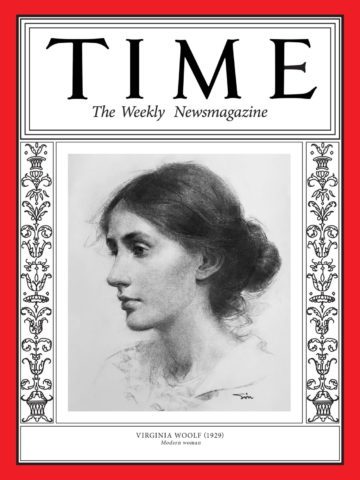
Πηγή εικόνας: Virginia Woolf / Illustration by Oliver Sin for TIME; George C. Beresford—Hulton Archive:Getty, TIME
Δεκαετία 1920
The Suffragists (1920) Emmy Noether (1921) Xiang Jingyu (1922) Bessie Smith (1923) Coco Chanel (1924) Margaret Sanger (1925) Aimee Semple McPherson (1926) Queen Soraya Tarzi (1927) Anna May Wong (1928) Virginia Woolf (1929)
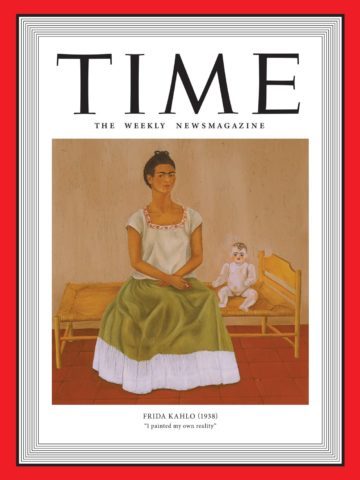
Πηγή εικόνας: Kahlo, Frida (1907-1954) Self-Portrait on the Bed or Me and My Doll, 1937: The Jacques and Natasha Gelman Collection of the 20th Century Mexican Art and The Vergel Foundation. Photo: Erich Lessing/Art resource, NY/ARS, NY. © 2020 Banco de México Diego Rivera Frida Kahlo Museums Trust, Mexico, D.F./Artists Rights Society (ARS), New York, TIME
Δεκαετία 1930
Martha Graham (1930) Maria Montessori (1931) Babe Didrikson (1932) Frances Perkins (1933) Mary McLeod Bethune (1934) Amelia Earhart (1935) Wallis Simpson (1936) Soong Mei-Ling (1937) Frida Kahlo (1938) Billie Holiday (1939)

Πηγή εικόνας: Simone de Beauvoir / Albert Harlingue—Roger Viollet Collection/Getty, TIME
Δεκαετία 1940
Dorothea Lange (1940) Jane Fawcett and the Codebreakers (1941) The Resisters (1942) Virginia Hall (1943) Recy Taylor (1944) Chien-Shiung Wu (1945) Eva Peron (1946) Amrit Kaur (1947) Eleanor Roosevelt (1948) Simone de Beauvoir (1949)

Πηγή εικόνας: Illustration by Marc Burckhardt for TIME; Alamy, TIME
Δεκαετία 1950
Margaret Chase Smith (1950) Lucille Ball (1951) Queen Elizabeth II (1952) Rosalind Franklin (1953) Marilyn Monroe (1954) Bus Riders (1955) Golda Meir (1956) Irna Phillips (1957) China Machado (1958) Grace Hopper (1959)
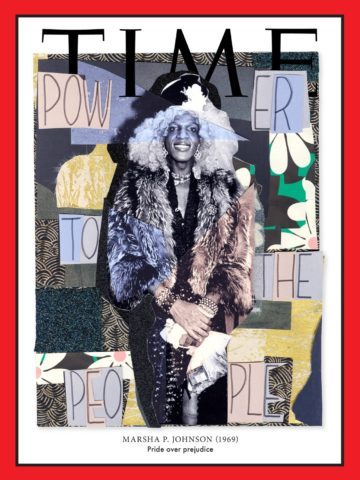
Art by Mickalene Thomas for TIME; Johnson: Arlene Gottfried—Daniel Cooney Fine Art; Sign: Diana Davies © NYPL/Art Resource, NY
Δεκαετία 1960
The Mirabal Sisters (1960) Rita Moreno (1961) Jacqueline Kennedy (1962) Rachel Carson (1963) Barbara Gittings (1964) Dolores Huerta (1965) Stephanie Kwolek (1966) Zenzile Miriam Makeba (1967) Aretha Franklin (1968), Marsha P. Johnson (1969)
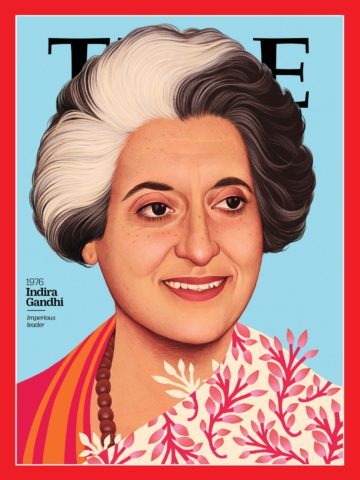
Illustration by Mercedes DeBellard for TIME; Gilbert UZAN—Gamma-Rapho:Getty
Δεκαετία 1970
Gloria Steinem @gloriasteinem (1970) Angela Davis (1971) Patsy Takemoto Mink (1972) Jane Roe (1973) Lindy Boggs (1974) American Woman (1975) Indira Gandhi (1976) Judith Heumann (@theheumannperspective) (1977) Lesley Brown (1978) Tu Youyou (1979)

Paper sculpture by Yulia Brodskaya for TIME
Δεκαετία 1980
Anna Walentynowicz (1980) Nawal El Saadawi (1981) Margaret Thatcher (1982) Françoise Barré-Sinoussi (1983) Bell Hooks (1984) Wilma Mankiller (1985) Corazon Aquino (1986) Diana Princess of Wales (1987) Florence Griffith Joyner (1988) Madonna (1989)

Illustration by Manjit Thapp for TIME; Brecher-Schulz/Ullstein Bild via Getty
Δεκαετία 1990
Aung San Suu Kyi (1990) Anita Hill (1991) Sinead O'Connor (1992) Toni Morrison (1993) Joycelyn Elders (1994) Sadako Ogata (1995) Ruth Bader Ginsburg (1996) Ellen DeGeneres (1997) J.K. Rowling (1998) Madeleine Albright (1999)

Veronique de Viguerie—Getty
Δεκαετία 2000
Sandra Day O'Connor (2000) Wangari Maathai (2001) The Whistleblowers (2002) Serena Williams @serenawilliams (2003) @Oprah Winfrey (2004) Melinda Gates @melindafrenchgates (2005) Ellen Johnson Sirleaf (2006) Lilly Ledbetter (2007) Michelle Obama @michelleobama (2008) @Malala Yousafzai (2009)
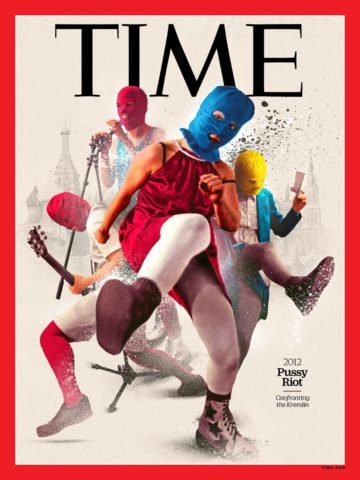
Illustration by Neil Jamieson for TIME; Sergey Ponomarev—AP
Δεκαετία 2010
Nancy Pelosi (2010) Tawakkol Karman (2011) Pussy Riot (2012) Black Lives Matter founders (2013) @Beyoncé Knowles Carter (2014) Angela Merkel (2015) Hillary Clinton @hillaryclinton (2016) Silence Breakers (2017) Maria Ressa @maria_ressa (2018) Greta Thunberg @gretathunberg (2019) Μπορείτε να δείτε όλες τις φωτογραφίες εξωφύλλων εδώ, καθώς επίσης και να διαβάσετε εκτενώς την ιστορία και τα κατορθώματα της κάθε γυναίκας που βρίσκεται στην λίστα. Read the full article
0 notes
Text
Το περιοδικό TIME επιλέγει τις 100 γυναίκες της χρονιάς


Illustration by Mark Summers for TIME; Fawcett Family/Anthony Crowley/Camera Press/Redux, 2014: Painting by Toyin Ojih Odutola for TIME, 1996: Painting by Shana Wilson for TIME, 1993: Portrait by Tim Okamura for TIME; Schiffer-Fuchs—Ullstein Bild/Getty, 1945: Illustration by Jennifer Dionisio for TIME; Bettmann/Getty, 1969: Art by Mickalene Thomas for TIME; Johnson: Arlene Gottfried—Daniel Cooney Fine Art; Sign: Diana Davies © NYPL/Art Resource, NY, 1959: Illustration by Marc Burckhardt for TIME; Alamy, 1962: Painting by Shana Wilson for TIME, 1977: Illustration by Jason Seiler for TIME; HolLynn D'Lil/Becoming Real in 24 Days, 1950: Illustration by Alan Dingman for TIME; Bettmann/Getty Το γνωστό περιοδικό ΤIME, με αφορμή τον Παγκόσμιο Μήνα Ιστορίας της Γυναίκας που γιορτάζεται όλον τον Μάρτιο, επιλέγει 100 «γυναίκες της χρονιάς» (σχεδιάζοντας 89 επιπρόσθετα εξώφυλλα στα ήδη υπάρχον 11), μία για κάθε χρόνο λειτουργίας του πρότζεκτ, από το 1920 έως το 2019. Αποδίδει έτσι φόρο τιμής στις -εδώ και πολλά χρόνια- συστηματικά επισκιασμένες συνεισφορές των γυναικών. Κάθε χρόνο το περιοδικό TIME, ξεκινώντας από το 1927, προσφέρει ένα πολυαναμενόμενο εξώφυλλο και αφιέρωμα στον «Άντρα της Xρονιάς», τιμώντας με αυτόν τον τρόπο όχι μόνο συγκεκριμένα άτομα (άντρες κατά κύριο λόγο) αλλά και ιδέες, ζευγάρια παντρεμένων ή πολιτικών αντιπάλων, ομάδες ανθρώπων καθώς, επίσης, και άψυχα αντικείμενα. Το 1999 το εν λόγω αφιέρωμα μετονομάστηκε σε «Πρόσωπο της Χρονιάς«», σε μια προσπάθεια να εκσυγχρονιστεί στο πνεύμα της εποχής της φυλετικής ισότητας και να σταματήσει να έχει έναν ανδροκεντρικό χαρακτήρα, καθώς ως και το 1999, μόλις τέσσερις γυναίκες τιμήθηκαν με ένα εξώφυλλο στο περιοδικό.

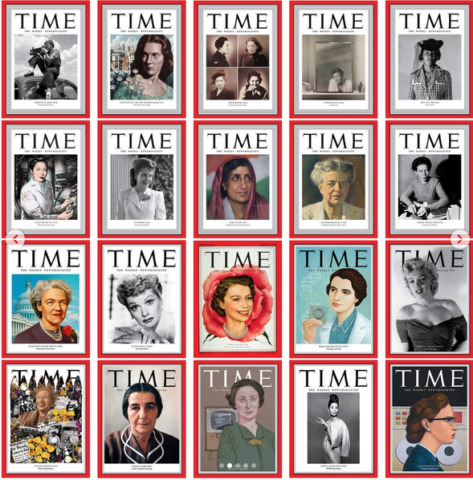
Πηγή εικόνων: περιοδικό TIME- instagram.com Οι γυναίκες ή τα προτζεκτ γυναικών που επιλέχθηκαν ως ορόσημα της κάθε χρονιάς είναι οι εξής:

Πηγή εικόνας: Virginia Woolf / Illustration by Oliver Sin for TIME; George C. Beresford—Hulton Archive:Getty, TIME
Δεκαετία 1920
The Suffragists (1920) Emmy Noether (1921) Xiang Jingyu (1922) Bessie Smith (1923) Coco Chanel (1924) Margaret Sanger (1925) Aimee Semple McPherson (1926) Queen Soraya Tarzi (1927) Anna May Wong (1928) Virginia Woolf (1929)

Πηγή εικόνας: Kahlo, Frida (1907-1954) Self-Portrait on the Bed or Me and My Doll, 1937: The Jacques and Natasha Gelman Collection of the 20th Century Mexican Art and The Vergel Foundation. Photo: Erich Lessing/Art resource, NY/ARS, NY. © 2020 Banco de México Diego Rivera Frida Kahlo Museums Trust, Mexico, D.F./Artists Rights Society (ARS), New York, TIME
Δεκαετία 1930
Martha Graham (1930) Maria Montessori (1931) Babe Didrikson (1932) Frances Perkins (1933) Mary McLeod Bethune (1934) Amelia Earhart (1935) Wallis Simpson (1936) Soong Mei-Ling (1937) Frida Kahlo (1938) Billie Holiday (1939)

Πηγή εικόνας: Simone de Beauvoir / Albert Harlingue—Roger Viollet Collection/Getty, TIME
Δεκαετία 1940
Dorothea Lange (1940) Jane Fawcett and the Codebreakers (1941) The Resisters (1942) Virginia Hall (1943) Recy Taylor (1944) Chien-Shiung Wu (1945) Eva Peron (1946) Amrit Kaur (1947) Eleanor Roosevelt (1948) Simone de Beauvoir (1949)
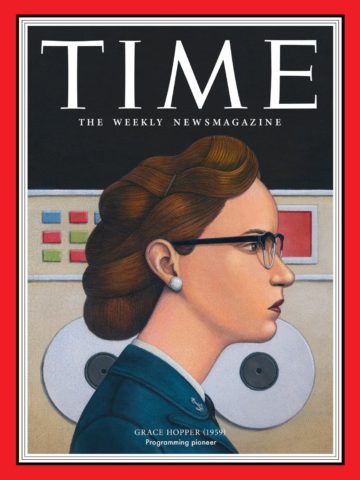
Πηγή εικόνας: Illustration by Marc Burckhardt for TIME; Alamy, TIME
Δεκαετία 1950
Margaret Chase Smith (1950) Lucille Ball (1951) Queen Elizabeth II (1952) Rosalind Franklin (1953) Marilyn Monroe (1954) Bus Riders (1955) Golda Meir (1956) Irna Phillips (1957) China Machado (1958) Grace Hopper (1959)

Art by Mickalene Thomas for TIME; Johnson: Arlene Gottfried—Daniel Cooney Fine Art; Sign: Diana Davies © NYPL/Art Resource, NY
Δεκαετία 1960
The Mirabal Sisters (1960) Rita Moreno (1961) Jacqueline Kennedy (1962) Rachel Carson (1963) Barbara Gittings (1964) Dolores Huerta (1965) Stephanie Kwolek (1966) Zenzile Miriam Makeba (1967) Aretha Franklin (1968), Marsha P. Johnson (1969)
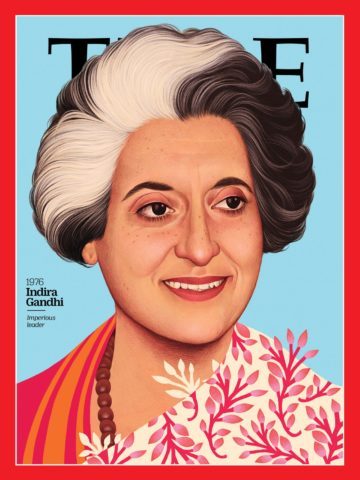
Illustration by Mercedes DeBellard for TIME; Gilbert UZAN—Gamma-Rapho:Getty
Δεκαετία 1970
Gloria Steinem @gloriasteinem (1970) Angela Davis (1971) Patsy Takemoto Mink (1972) Jane Roe (1973) Lindy Boggs (1974) American Woman (1975) Indira Gandhi (1976) Judith Heumann (@theheumannperspective) (1977) Lesley Brown (1978) Tu Youyou (1979)

Paper sculpture by Yulia Brodskaya for TIME
Δεκαετία 1980
Anna Walentynowicz (1980) Nawal El Saadawi (1981) Margaret Thatcher (1982) Françoise Barré-Sinoussi (1983) Bell Hooks (1984) Wilma Mankiller (1985) Corazon Aquino (1986) Diana Princess of Wales (1987) Florence Griffith Joyner (1988) Madonna (1989)

Illustration by Manjit Thapp for TIME; Brecher-Schulz/Ullstein Bild via Getty
Δεκαετία 1990
Aung San Suu Kyi (1990) Anita Hill (1991) Sinead O'Connor (1992) Toni Morrison (1993) Joycelyn Elders (1994) Sadako Ogata (1995) Ruth Bader Ginsburg (1996) Ellen DeGeneres (1997) J.K. Rowling (1998) Madeleine Albright (1999)

Veronique de Viguerie—Getty
Δεκαετία 2000
Sandra Day O'Connor (2000) Wangari Maathai (2001) The Whistleblowers (2002) Serena Williams @serenawilliams (2003) @Oprah Winfrey (2004) Melinda Gates @melindafrenchgates (2005) Ellen Johnson Sirleaf (2006) Lilly Ledbetter (2007) Michelle Obama @michelleobama (2008) @Malala Yousafzai (2009)
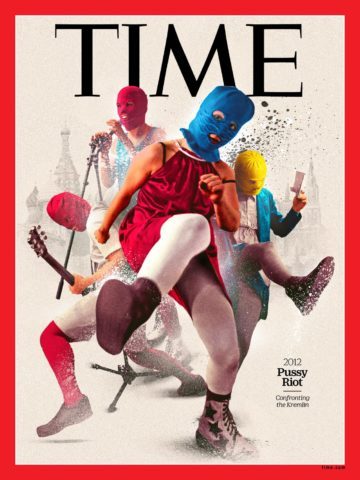
Illustration by Neil Jamieson for TIME; Sergey Ponomarev—AP
Δεκαετία 2010
Nancy Pelosi (2010) Tawakkol Karman (2011) Pussy Riot (2012) Black Lives Matter founders (2013) @Beyoncé Knowles Carter (2014) Angela Merkel (2015) Hillary Clinton @hillaryclinton (2016) Silence Breakers (2017) Maria Ressa @maria_ressa (2018) Greta Thunberg @gretathunberg (2019) Μπορείτε να δείτε όλες τις φωτογραφίες εξωφύλλων εδώ, καθώς επίσης και να διαβάσετε εκτενώς την ιστορία και τα κατορθώματα της κάθε γυναίκας που βρίσκεται στην λίστα. Read the full article
0 notes